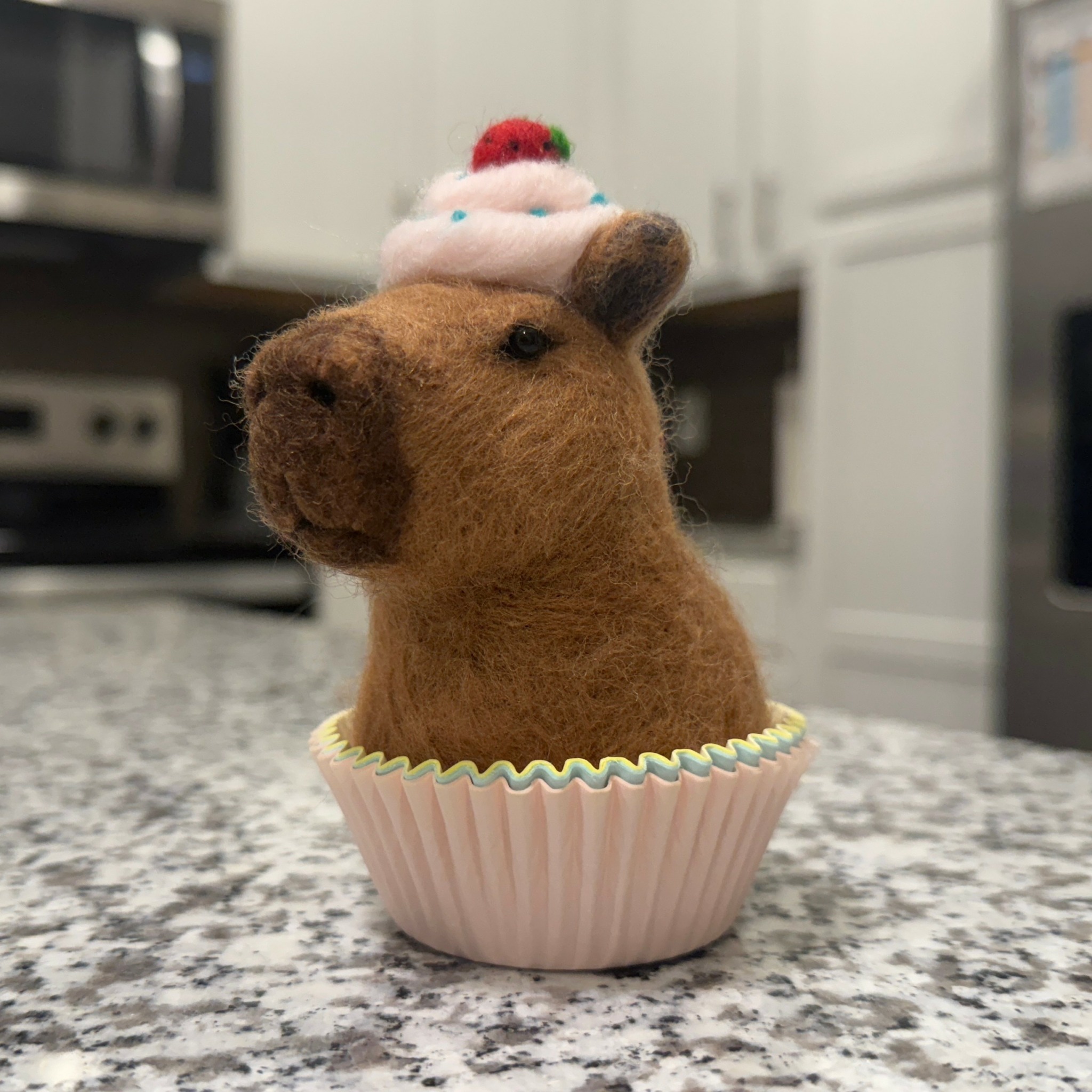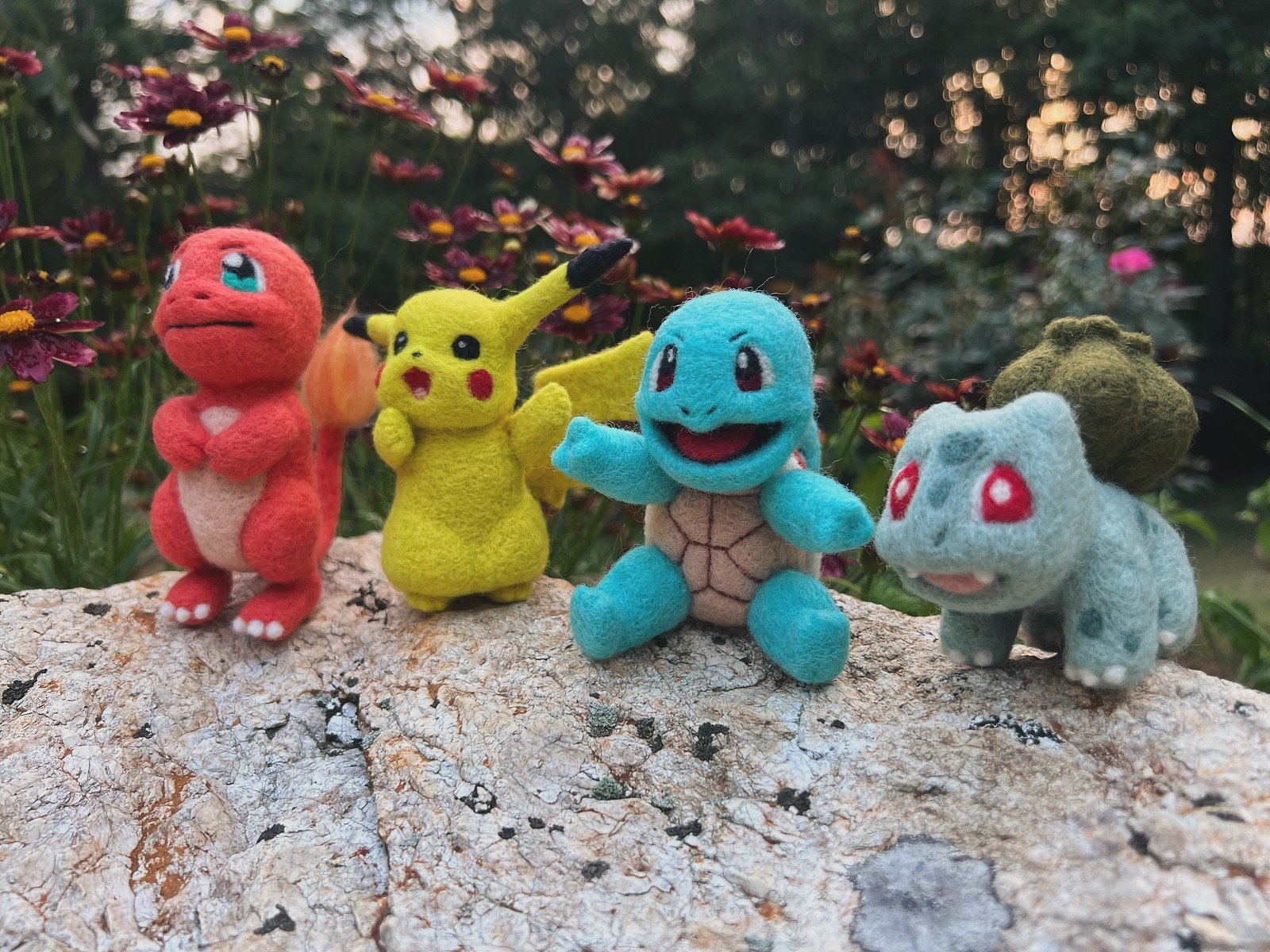Alright – so today we’ve got the honor of introducing you to Annie Harrow. We think you’ll enjoy our conversation, we’ve shared it below.
Annie , thanks for taking the time to share your stories with us today Learning the craft is often a unique journey from every creative – we’d love to hear about your journey and if knowing what you know now, you would have done anything differently to speed up the learning process.
I’ve always been a crafter at heart—someone who loves the process of creating something out of nothing—but no hobby ever truly captured me the way needle felting did. One day, I stumbled across a needle felting account on Instagram. The tiny wool sculptures looked so alive, so full of character, that I decided to give it a try. I bought a little kit of a koala and eagerly dove in. The finished result was lopsided and far from perfect, but I remember feeling an unexpected spark—an almost childlike wonder that with just wool, a needle, and some imagination, I could shape something entirely my own.
That first “pitiful” koala became my turning point. I started experimenting beyond kits, creating my own versions of the little creatures from a video game I loved. Each project became a challenge to outdo the last—starting with simple shapes and slowly tackling more complex designs. What fascinated me most was the transition from 2D to 3D: turning a flat image into a figure that could be seen and touched from every angle. I had to imagine what wasn’t shown—the curve of a back, the placement of a joint, the shape of a hand.
To fill in those gaps, I studied photos and videos of real animals and people, learning how light, structure, and anatomy brought life to form. My nursing background helped more than I expected; understanding the way muscles and bones fit together gave my creations a sense of balance and realism.
Of course, the journey wasn’t without obstacles—broken needles, uneven shapes, and countless hours spent reworking details—but each mistake taught me something new. Looking back, I realize how much persistence, observation, and patience were key to mastering this craft. If I could have done anything differently, it might have been joining online felting communities earlier to learn from others. Still, there’s something deeply rewarding about the trial and error, the quiet rhythm of felting, and watching a creation slowly come to life beneath my hands.
Now, I no longer rely on kits or references. I create my own designs from imagination—each piece a small reflection of how far I’ve come since that first little koala

As always, we appreciate you sharing your insights and we’ve got a few more questions for you, but before we get to all of that can you take a minute to introduce yourself and give our readers some of your back background and context?
My name is Annie, and I’m the creator behind GeekFabrique — a small world of needle-felted figures inspired by the movies, shows, and games that have shaped my imagination since childhood. I’ve always believed that art connects people through stories, and needle felting gives me a way to tell those stories in wool — soft, textured, and full of life. Every piece I make feels like watching a daydream slowly take form between my hands.
Over time, my work has grown beyond personal creations to collaborations that mean something deeper. One of the most meaningful projects I’ve been part of is The Muffle Monster Project, created in partnership with artist Adam Sanford. Together, we designed a group of felted creatures meant to help teachers manage their classrooms in a creative and gentle way. The idea was simple: the Muffle Monsters only come out to visit when the classroom is calm and quiet, and they return to their enclosure when the noise grows too loud.
I sculpted several of Adam’s characters and designed a few of my own, each with a personality and expression that might appeal to children — shy, curious, mischievous, kind. What surprised me most wasn’t just how effective the project was for classroom order, but how deeply it inspired the children’s creativity. On every visit, I’m greeted by drawings of the Muffle Monsters — not only the ones I created, but new creatures imagined by the students themselves. They name them, color them, and give them stories. Watching that ripple of imagination spread is something I’ll never forget.
I think that’s what art does best — it invites others to dream. It helps children build confidence, empathy, and problem-solving skills without even realizing they’re learning. Art gives permission to explore, to make mistakes, to see beauty in imperfection — something I’ve experienced in my own creative journey again and again.
At GeekFabrique, my mission is to celebrate that spirit of imagination. Whether I’m sculpting a beloved character from pop culture or a brand-new creature from my own mind, I want my work to spark a sense of wonder — to remind people that creativity isn’t something you grow out of, it’s something you grow into.

What can society do to ensure an environment that’s helpful to artists and creatives?
I think the best way society can support artists and creatives is by recognizing how important creativity really is — not just as something pretty or fun to look at, but as something that helps people connect, heal, and grow. Art has a way of reaching people when words can’t. It can inspire, comfort, and spark ideas in ways that nothing else can.
Supporting artists starts with encouraging creativity early on — especially in children. Schools need to make room for art, not treat it like an extra. When kids are given space to create freely, they learn problem-solving, patience, and confidence. They learn that mistakes can lead to something beautiful.
Another big thing is giving artists opportunities and fair recognition. So many creative people have incredible ideas but lack the visibility or resources to share them. Society can help by creating more chances for collaboration, local showcases, and funding for small creators.
And finally, support doesn’t always have to be big or formal — it can be as simple as buying handmade, sharing an artist’s work online, or telling someone you appreciate what they make. Every bit of encouragement helps. When we lift up artists, we’re really lifting up imagination, and that’s something the world always needs more of.

For you, what’s the most rewarding aspect of being a creative?
For me, the most rewarding part of being a creative is watching something that started as a small idea in my head take shape right in front of me. There’s this moment when the piece starts to come to life — when it suddenly has personality and emotion — and it feels a little bit like magic.
It’s also incredibly rewarding when my work connects with other people. Knowing that something I made can make someone smile, remind them of a favorite character, or even inspire them to create something of their own means everything to me.
I think that’s what keeps me creating — that mix of personal fulfillment and connection. Every time I finish a new piece, I feel like I’ve learned something, not just about the craft itself, but about patience, imagination, and how much joy there is in simply making something by hand.
Contact Info:




Image Credits
None


